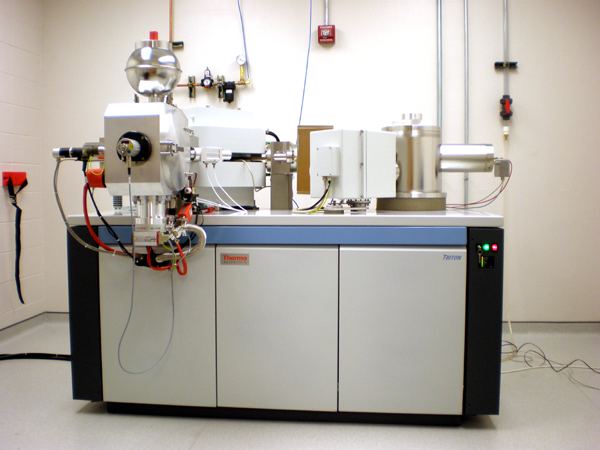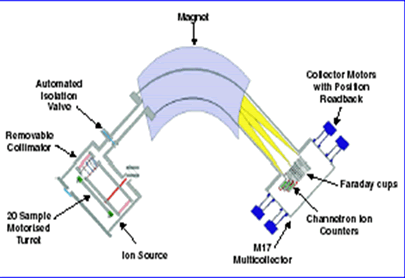 | ||
Thermal ionization mass spectrometry (TIMS) is a highly sensitive isotope mass spectrometry characterization technique that exploits the thermal ionization effect, in which a chemically purified sample is heated to cause ionization of the atoms of the sample. The ions are focused into a beam by electrostatic lenses, then separated into individual beams based on the mass/charge ratio of the ions by an electromagnet. The technique is used extensively in isotope geochemistry, geochronology, and in cosmochemistry. TIMS is a magnetic sector mass spectrometry technique in which ions are separated as a function of their charge and velocity or mass in a magnetic field. Variants of this technique are ID-TIMS (ID = Isotope Dilution) and CA-TIMS (CA = Chemical Abrasion).

The relative abundances of different isotopes are then used to describe the chemical fractionation of different isotopes, travel in different reservoirs of non-radiogenic isotopes, and age or origins of solar system objects by the presence of radiogenic daughter isotopes.



